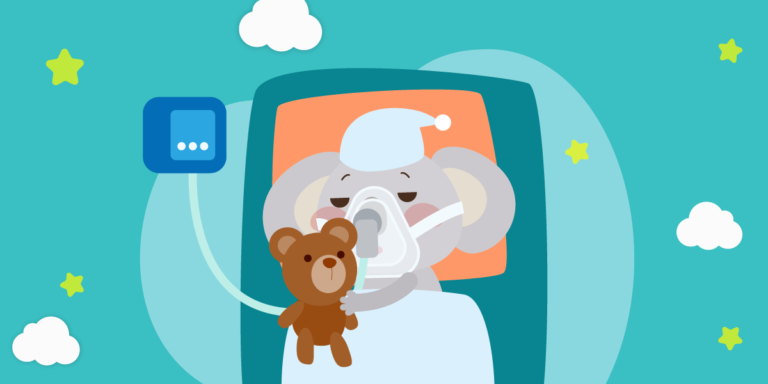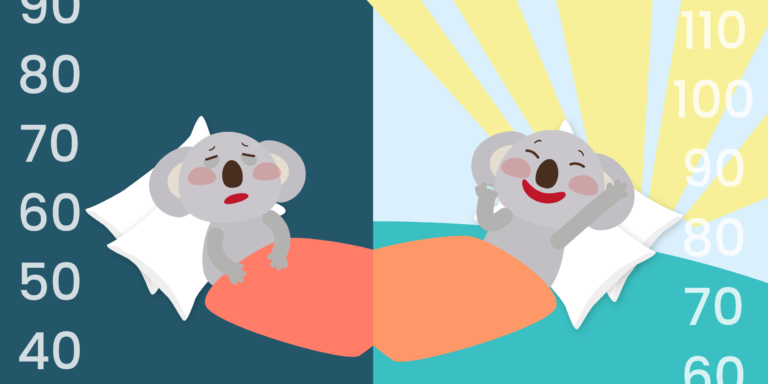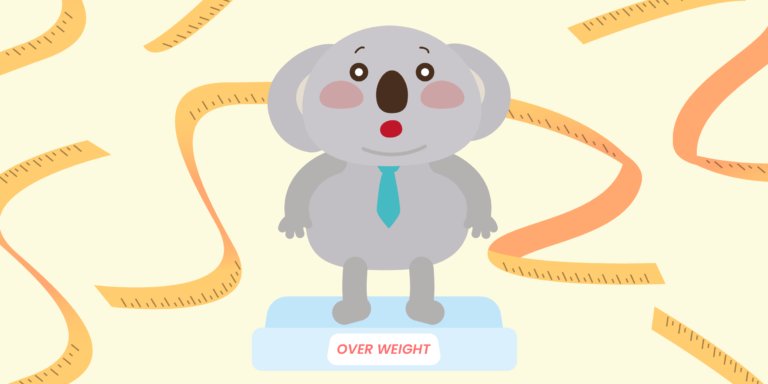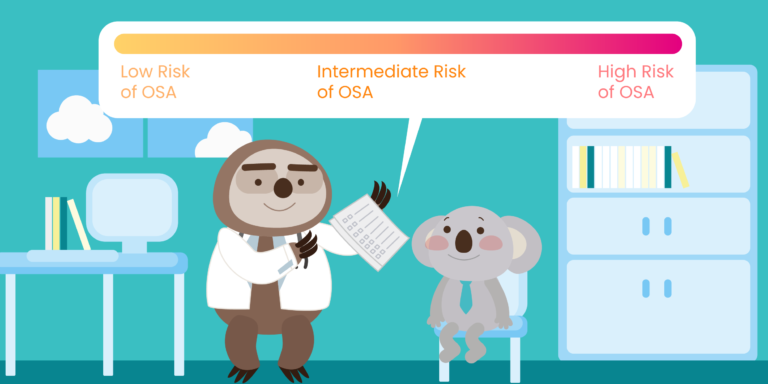Getting diagnosed with sleep apnea may sound very scary at first, and you might start to worry about the next step to help you treat sleep apnea and sleep better with sleep apnea. There is no need to worry much because sleep apnea is treatable and there are different actions that can guide you to better sleep with sleep apnea.
What is Sleep Apnea?
If you are not familiar with sleep apnea yet, here is a little bit of information to help you start with it. Sleep apnea is a sleeping disorder in which breathing is disturbed as it stops and resumes rapidly and unconsciously during sleep. Sleep apnea hinders you from getting enough oxygen and may cause you to gasp and wake up several times during the night, making you feel bad:
- Headaches in the morning
- Excessive sleepiness during the day
- Frequent urination at night
- Constant irritability or mood swings during the day
- Lack of concentration or short attention span.
Your bed partner or family members may also report that you snore loudly at night or sometimes gasp for air in your sleep. These are the most common symptoms of sleep apnea. In the long term, sleep apnea may also cause long-term health issues such as high blood pressure or heart disease.
If you are experiencing these symptoms, it is important to get checked for sleep apnea at your nearest sleep clinic as soon as possible. You can also get diagnosed through TipTraQ, PranaQ’s at-home sleep test now!
“I have Sleep Apnea, What’s Next?”
When you know that you suffer from sleep apnea, you wonder what to do next, and especially if treatment is the only thing you can do to achieve better sleep quality with sleep apnea. Treatment is definitely necessary, especially when it comes to moderate to severe sleep apnea. However, there are different habits you can change to support your treatment or to start in before getting sleep apnea treatment. Here we present 7 tips and tricks on how to sleep better recommended by Dr. Kirstin Knobbe, MD, a sleep specialist at Banner-University Medical Center Phoenix.
1. Practice good sleep hygiene starting with a proper sleep schedule
Good sleep hygiene is necessary to improve poor sleep quality. It is usually achieved through a set sleep schedule and other important sleeping habits. A good sleep schedule means that you sleep and wake up at the same times every day throughout the week. While this means a goodbye to sleeping and waking up late during the weekends, it resets the body to reach its optimal condition. The consistent sleeping schedule helps to maintain the body’s circadian rhythm or internal clock, more quickly. This allows the body to adjust better and can still get a good amount of seven to nine hours of sleep per night, even if you struggle with sleep apnea.
2. Commit to a regular exercise routine and diet changes
The main causes of sleep apnea are usually related to weight gain, unhealthy diet or simply an unfit body. Regular exercise is a good start to lose weight and possibly improve sleep quality.
Any type of exercise can help you sleep better, whether it is weight training, aerobic activities, or even simple cardio. Some kinds of exercises include running, riding a stationary bike, doing yoga, or even doing strength training at least two to seven days a week. The duration of the workout doesn’t have to be too long, as an average of 20 minutes of moderate aerobic activity has been shown to be enough to help improve your sleep quality!
3. Find the perfect way to use CPAP machine
After you are diagnosed with sleep apnea, your sleep doctor or physician will recommend you different types of treatment, and most likely involving a continuous positive airway pressure machine (CPAP). CPAP retains the patient’s airway track by passing a constant stream of positive pressure air through a mask. The constant and regulated air pressure enters the back of the throat and forces the throat muscles, which have become too relaxed during sleep, to open. CPAP treatment has so far proven to be the most effective treatment for sleep apnea patients. However, there are different settings that need to be customised for each patient, and everyone may respond differently to CPAP treatment.
For CPAP machines, there are many types of masks with different pressure settings to suit your needs. Finding the perfect CPAP setting takes a lot of trial and error, but your sleep doctor will guide you to find the best adjustment that you are comfortable with to reach a better sleep quality.
CPAP components need to be cleaned frequently and you must wash your face before putting the mask on at night to ensure its hygiene.
4. Consider dental appliances
Sleep apnea can occur in varying degrees of severity, and not all sleep apnea patients require a CPAP machine. Instead, mild to moderate sleep apnea patients can opt for alternative oral appliance therapy. Oral appliances come in several forms. The most common is a mouthguard that shifts the lower jaw slightly forward. This tightens the soft tissues and muscles at the back of the throat and prevents obstruction during sleep.
“CPAP is not a one-size-fits-all therapy although considered the most effective treatment for sleep apnea, and there are different options like oral appliances to treat sleep apnea if you have natural teeth or a healthy body weight.” – Dr. Kristin Knobbe.
Oral appliances are lighter than CPAP machines and may also require less maintenance. They may have fewer side effects than CPAP devices in patients with mild sleep apnea, but can cause tooth or jaw movement if used improperly.
5. Adjust to certain sleep positions
Everyone has different preferences for their preferred sleep position, but certain sleep positions might need to be changed to reduce symptoms of sleep apnea.
The best sleeping position for sleep apnea patients is the lateral position (side sleeping), as it naturally straightens your back and reduces the severity of apnea and snoring. Another sleeping position that is better for sleep apnea is the prone position.
Stomach sleeping (prone position) has a similar effect to side sleeping because gravity is shifted to your side. This helps to pull the mouth and throat tissues forward and reduces the likelihood that they will block the airway. However, make sure that you can breathe properly while sleeping on your stomach. The prone position is recommended for adults with sleep apnea, but children with sleep apnea usually sleep better in the side or supine position.
Both sleeping positions are recommended for adult sleep apnea patients, but they can put strain on your neck, shoulders, hips and spine. Therefore, it is very important to use the right pillow to support the sleeping positions.
For sleep apnea patients with acid reflux or existing back pain, it is recommended to sleep on your back with the head elevated to relieve the pain and prevent the stomach acid from rising during sleep.
6. Choose the best pillow recommended for sleep apnea patients
The best sleeping positions for sleep apnea patients usually need to be supported by choosing a good pillow. Choosing the best pillow according to your personal preference and sleeping position will help you sleep well with sleep apnea.
If you prefer to sleep on your side, it is best to choose a thicker pillow that supports your head and neck and also relieves pressure on your shoulders. Some people also prefer other types of pillows like large body pillows, which can help to keep them stay in the right position while cuddling it (the pillow itself).
For those of you who prefer to sleep on your stomach, thinner pillows are recommended as they help to prevent neck strain.
Be careful! If you suffer from sleep apnea and acid reflux, raise the head of the bed with an adjustable bed or recliner while sleeping on your back. CPAP users may also consider using different types of CPAP pillows designed to be used along with CPAP devices. The distinct design is usually designed to let sleep apnea patients sleep on their side without being constricted by the CPAP mask or tube.
7. Use a room humidifier
Some of the most common sleep apnea symptoms are sore throat, stuffy nose, and waking up with a dry mouth. All of these symptoms occur because dry air can irritate the nose and throat, causing you to snore and forcing you to breathe with your mouth open while you sleep.
Sleep apnea patients who experience these symptoms can use a humidifier as it increases the humidity in the room, which can help to ease these symptoms and help you breathe better while you sleep. Most modern CPAP machines have a built-in humidifier, but it has been proven that having an additional humidifier in the room is of greater benefit to sleep apnea patients.
A humidifier is fairly easy to use as long as clean water is added daily and parts are washed regularly or replaced as needed.
You are set to sleep better now!
Does having sleep apnea still sound scary to you? We hope all these tips and tricks will change your mind now, because sleep apnea is definitely treatable and these steps will help you feel better! Sure, you’ll need to make changes after getting diagnosed with sleep apnea to help you sleep better. But all of these tips will get you on your way to treating sleep apnea and making you feel fitter than ever.
To make sure you can also check how your sleep quality is improving after doing all these necessary tips and tricks, use TipTraQ to track your sleep in the comfort of your own bed!







